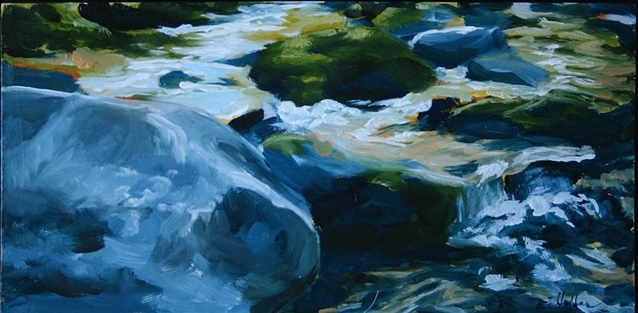It takes a lot for someone as fashion-challenged as I am to spend time thinking about a dress. I consider clothing first and foremost means to avoid going to jail. Like more than a few guys I know, my wardrobe is divided into two categories: the clean clothes and the stuff still sitting in the hamper.
I’d much rather write about what makes the Bill O’Reilly flap different from the Brian Williams flap (the short version is that Brian Williams works for a group that punishes you for not telling the truth), or about why we should be paying more attention to Putin than to Jihadi John (’cause he’s the one with the nukes) or even this endless snowdrift of a winter we’ve been enduring.
With those choices on the menu, we can understand why folks would find it more pleasant to talk about a dress, or anything else for that matter. In case you missed it, there was a massive and at times nasty debate online last week about a seemingly innocuous topic that most of us would have thought was straightforward. Is the dress modeled by Laura Coleman in this image brown and white, or blue and white, or is that not white but some shade of gold?
Like many matters debated online, this one grew heated in many corners. Families were divided, friendships strained and insults hurled over what, at first glance, seems to most of us a question with a simple answer. Ahhh, but not so fast.
For illumination on all matters having to do with color I turn to our resident expert on such issues, my wife, Ellen, who paints and teaches art at a local high school. I frequently consult her on less urgent matters, such as “Do you know where I left my car keys?” and have found her quite reliable in both areas.

It turns out her classes last week spent considerable time discussing the dress and why people are so divided over its color. It was, as they like to say, a teachable moment. As is every moment in one of her classes.
She taught me about Josef Albers. The German-born Albers taught art at Yale for many years. He essentially invented modern color theory. His 1963 masterwork, The Interaction of Color, changed the way art is taught and it could change the way you see the dress. His work lives at the intersection of science and art. Albers also designed some pretty cool album covers, including Terry and the All Stars’ Persuasive Percussion, back in 1959.
But enough about him.
According to Ellen, when light hits the back of your eye, it gets categorized. We move through our day and perceive things, including color, on the fly. In order to function, we turn the complicated data set that is a color into a monolith – that light is green, step on the gas. Once we categorize, we cease to observe. We see what we need to see.
But others may have a very different, and completely valid experience of that same color.
Instead of listening to the science that might help us understand why we are seeing things differently, we argue, insisting that ours is the valid point of view. Whether it’s a dress or an immigration policy, or our opinion about the Superintendent of schools, we seem prone to divide up and categorize rather than to analyze and understand.
The dress might not be just a dress after all. It might be a hint about how to get along in spite of ourselves.
A Note on Sources:
Ellen Haffar happens to be my wife, but don’t hold that against her. She’s an artist with an impressive body of work, and an art teacher who leads the Fayetteville-Manlius School District art program. This year she was honored at the Scholastic Art Awards Competition with the Nicholas Todisco award for inspiring young artists. It’s essentially the Teacher of the Year award for art teachers from a 13-county area. So she knows a thing or two about color.




